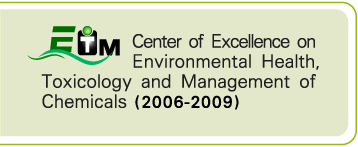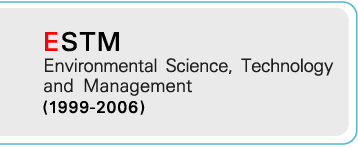|
The Pseudomonas aeruginosa PAO1 thiol peroxidase homolog (Tpx) belongs to a family of enzymes implicated in the removal of toxic peroxides. We have shown the expression of tpx to be highly inducible with redox cycling/superoxide generators and diamide and weakly inducible with organic hydroperoxides and hydrogen peroxide (H2O2). The PAO1 tpx pattern is unlike the patterns for other peroxide-scavenging genes in P. aeruginosa. Analysis of the tpx promoter reveals the presence of a putative IscR binding site located near the promoter. The tpx expression profiles in PAO1 and the iscR mutant, together with results from gel mobility shift assays showing that purified IscR specifically binds the tpx promoter, support the role of IscR as a transcriptional repressor of tpx that also regulates the oxidant-inducible expression of the gene. Recombinant Tpx has been purified and biochemically characterized. The enzyme catalyzes thioredoxin-dependent peroxidation and can utilize organic hydroperoxides and (H2O2) as substrates. The Δtpx mutant demonstrates differential sensitivity to (H2O2) only at moderate concentrations (0.5 mM) and not at high (20 mM) concentrations, suggesting a novel protective role of tpx against (H2O2) in P. aeruginosa. Altogether, P. aeruginosa tpx is a novel member of the IscR regulon and plays a primary role in protecting the bacteria from submillimolar concentrations of (H2O2). IscR is a global transcription regulator responsible for governing various physiological processes during growth and stress responses. The IscR-mediated regulation of the Pseudomonas aeruginosa isc operon, which is involved in iron-sulphur cluster ([Fe-S]) biogenesis, was analysed. The expression of iscR was highly induced through the exposure of the bacteria to various oxidants, such as peroxides, redox-cycling drugs, intracellular iron-chelating agents, and high salts. Two putative type 1 IscR-binding sites were found around RNA polymerase recognition sites, in which IscR-promoter binding could preclude RNA polymerase from binding to the promoter and resulting in repression of the isc operon expression. An analysis of the phenotypes of mutants and cells with altered gene expression revealed the diverse physiological roles of this regulator. High-level IscR strongly inhibited anaerobic, but not aerobic, growth. iscR contributes significantly to the bacteria overall resistance to oxidative stress, as demonstrated through mutants with increased sensitivity to oxidants, such as peroxides and redox-cycling drugs. Moreover, the regulator also plays important roles in modulating intracellular iron homeostasis, potentially through sensing the levels of [Fe-S]. The increased expression of the isc operon in the mutant not only diverts iron away from the available pool but also reduces the total intracellular iron content, affecting many iron metabolism pathways leading to alterations in siderophores and haem levels. The diverse expression patterns and phenotypic changes of the mutant support the role of P. aeruginosa IscR as a global transcriptional regulator that senses [Fe-S] and directly represses or activates the transcription of genes affecting many physiological pathways. แหล่งข้อมูล:
|
 Center of Excellence on Environmental Health and Toxicology (EHT)
Center of Excellence on Environmental Health and Toxicology (EHT)










